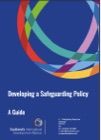Awareness Raising
Embedding a safeguarding culture which expects people to treat each other with respect, raise concerns, report incidents and make changes for the better can only take place if it is widely understood, and expectations are clear. People at all levels of involvement with an organisation need to be clear and aware about what constitutes abuse and harm; what their rights are; how to make complaints and what will happen when complaints and incidents are reported. Ensuring that these issues are communicated clearly and in context to each individual however can be challenging.
Our Top Three Recommendations
- Understanding Effective Safeguarding Culture provides indicators around Awareness Raising
- No Excuse for Abuse by Interaction: a 6 minute film available in different languages designed to be used to explain the concept of safeguarding to communities
- Rules on Sexual Conduct for Humanitarian Workers by Translators Without Borders, is being translated into 100-plus plain langauge versions to suit different communities.
Resources
- See the videos in our Safeguarding Basics section, in particular No Excuse for Abuse by Interaction: a 6 minute film available in different languages designed to be used to explain the concept of safeguarding to communities. Can be used in conjunction with the Community Visualisation Toolkit mentioned below (has the same visuals).
- Understanding Child Safeguarding: A Facilitator’s Guide: this guide by Keeping Children Safe is designed to help you plan and facilitate workshops for staff and associates who have little understanding of what is meant by “child abuse” and what their responsibilities are to safeguard children.
- How to Communicate Safeguarding and PSEA Messages to Communities during Covid-19: this guide by Keeping Children Safe responds to the fact that during emergency situations, it is likely that harm, exploitation, neglect, and abuse will increase. It contains useful guidance on communicating safeguarding with communities even outwith emergency situations. Available in several languages.
- Community Visualisation Toolkit developed by Rooftop design agency in collaboration with Habitat for Humanity International, Oxfam International, and WaterAid, this toolkit is adaptable and designed to assist humanitarian and development agencies to communicate key safeguarding messages to the communities in which they and their partners work. Helping to break down barriers of language, literacy, and accessibility, users can adapt elements such as text, clothing, backgrounds etc to suit their own context.
- Rules on Sexual Conduct for Humanitarian Workers: Translators without Borders has worked with the international humanitarian world’s coordination body, Inter-Agency Standing Committee (IASC) to create a plain language version of the principles regarding sexual conduct, and are now translating them into 100-plus languages.
- Course Materials for Preventing Sexual Exploitation and Abuse: This was developed by Interaction to provide NGOs with simple to use training modules which focus on PSEA basics, Reporting Systems, and Community Based Complaints, and can be adaptable to different locations and audiences (i.e. use with staff, senior management, community members). Includes full session plans, handouts & facilitators guide.

Safeguarding in Context
Read about the background and wider context of safeguarding in international development

Safeguarding in Practice
Access practical tools, resources and training to help you in your own organisation
* Overview
* Training and Safeguarding Basics
* Safeguarding Leads/Focal Points

Tailored Support & Networks
Find safeguarding experts and connect with others working in the sector
* The Alliance’s Safeguarding Working Group


